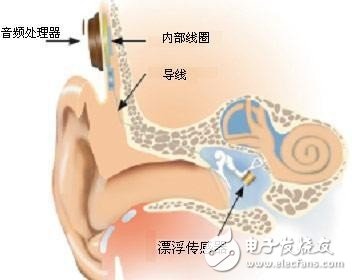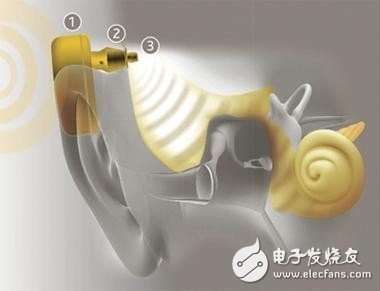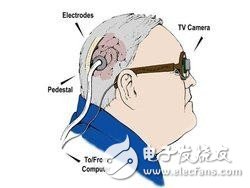How do smart wearable devices save our hearing step by step?
Since the birth of mankind, efforts have been made to fight disease and aging. For the loss of the body's local functions, human efforts have two ideas: "fix or replace." It is a pity that "fixing" does not apply to all situations. Physical disabilities can't grow new limbs, hearing loss can't be regenerated... So finding "alternative" becomes the only viable way.
In the pirate movie, we can see a fierce pirate captain with a wooden foot. In contemporary society, the prosthetic limbs of crutches, wheelchairs and even blade warriors are not uncommon. The friends with decreased vision also have glasses with optical lenses on their noses. The hearing-reducing friends also wear hearing aids, in addition to artificial joints and artificial joints. Heart, artificial lung, artificial kidney. Even the latest movie "Agent College" is thinking about implanting in vivo chips.
We should be grateful that advances in technology and medicine have made "alternative" technology more and more mature. The author is in the hearing and medical industry, and the self-proclaimed science popularizes the evolutionary history of the industry that is the only one of the current "smart devices".
The first step is smart: amplify the sound
Hearing aids, everyone may have an impression. A few decades ago, the white-haired grandfather had a headset in his ear, a long line hanging over his chest, and a radio-like box in his shirt pocket. This is an "analog hearing aid" that is rarely used now. It is simply a linear amplifying circuit that amplifies the sound. Compared to the user’s original hearing, the “enlarged sound†is obviously smarter.
The second step of intelligence: nonlinear amplification
Later, it was found that the user's hearing loss was not the same as the frequency loss. The linear amplification of the analog circuit was not good, so a digital hearing aid based on the DSP chip appeared. After a rigorous hearing test, different compensation amounts are given according to different frequencies, so that the sound of the hearing aid non-linear amplification is more suitable for the user.
The third step of intelligence: noise reduction and scene recognition
Later, I found that there is a problem with the hearing aid: What if the hearing aid always feels noisy? Although the "noise reduction" procedure can be adopted by the identification of the sound data model by the establishment of the sound data model, the user's demand for effective sound in different scenarios is not uniform. What? Then, the location of the smartphone is used to judge the scene, and the hearing aid sound processing program automatically switches between different scene processing programs.

I really like the pistachio hearing aid, OTIcon
The fourth step of intelligence: made for iphone
The use of mobile phones is also very important for the hearing impaired, and it is always inconvenient to wear a hearing aid to make a phone call. Therefore, in the latest hearing aids, there are already hearing aids for 2.4Ghz Bluetooth connection with the phone.

The fifth step of intelligence: the integration of new technologies
Can you have very small hearing aids? Can there be hearing aids that are not easily damaged? Can there be a hearing aid that can be used longer? Can there be hearing aids based on Chinese language strategies?
Smaller and smaller chips make the volume and power consumption smaller and smaller, and the performance is getting better;
The use of nano-coating makes the hearing aid dustproof and waterproof and not easy to break;
Data analysis of the Chinese sound model makes the language processing program suitable for Chinese.
In the final analysis, hearing aids, as a smart device, are not a spurt in technology, but an integration of technology developments such as chips, power supplies, language processing programs, and microphones.
Rebuilding your hearing with smart devices?
After talking about the hearing aid, we should think about it if one's hearing loss is so serious that the hearing aid does not work. For example, patients with severe otitis media and very severe neurological deafness cannot use existing hearing aids.
I would say that the cochlear implant is the first true artificial organ in human history? It can replace the function of the human ear, and Biger is very high.
The basic principle is to implant a coil and an electrode subcutaneously, and the electrode discharge directly stimulates the auditory nerve to obtain hearing. A speech processor is used on the ear, and the signal is transmitted between the head piece and the subcutaneously implanted coil by "trans-skin communication".

Involving subcutaneous implantation, it is necessary to use materials that do not repel the body. For example: titanium alloy, bioceramic, silica gel. In addition to the material, it is the process of production. If the chip infiltrates into the skin under the skin, it will not work properly. From this point of view, it is impossible to implant the chip directly in the ear of the film. These are not the highest level of technical requirements, but it is very difficult to do all of these technologies.
For patients with otitis media and external ear malformation, the inner ear function is good, there is no need to make a cochlear implant, but the hearing aid can not be used, what should I do? There are still ways.

This is the vibration sound bridge technology. The general principle is that there is a metal vibrator in the inner ear cochlea, instead of the middle ear three listening to the small bone for sound transmission.

This is the BAHA bone anchor hearing aid technology. The general principle is to embed a titanium alloy nail on the skull, and the outside is a processor that transmits sound through the vibration of the skull.

This is a Sophono bone-anchored hearing aid. Unlike BAHA, the skin does not require bare nails or anything else. The implant is fully implanted and the processor and implant are passed through a “trans-skin communication†approach.
What kind of organs can smart devices replace?
The above is the science of hearing medical devices, and in recent years, "artificial vision" technology has been in clinical trials. A method of implanting an integrated circuit chip into the eye to assist a blind person in restoring vision using retinal repair techniques. It is a pity that this technology can only help users to have a sense of light and contour, and can not fully reconstruct their vision.

In summary, intelligent artificial organs are coming towards us. The development of materials technology, power technology, chip technology, and communication technology has enabled mankind to achieve "rehabilitation of the disabled, blindness of the blind, and rehabilitation of the deaf." and the real development of smart devices may not only be in the near future. It is necessary to carry out intelligent transformation of existing equipment, and more importantly, the real realization of "demand", "technology", and "expansion of discipline integration".
DroneLiPo Battery Blance Charger,Li-Ion Battery Charger,12S Battery Charger,Li Fe Battery Charger, Charging HUB
Drone LiPo Battery Blance Charger,Li-Ion Battery Charger,12S Battery Charger,Li Fe Battery Charger,Charging HUB
shenzhen GC Electronics Co.,Ltd. , https://www.jmrdrone.com